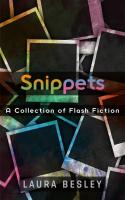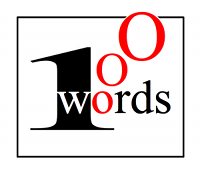We ran two workshops in The Gallery at Hanse House on the 4th day of The Nine Realms: a Norse-themed poetry workshop in the morning, and an art workshop experimenting with the printing technique of monotypes in the afternoon. Both workshops were facilitated by creatives involved in The Nine Realms project: poet, Rebecca Audra Smith and artist, Robert Fitzmaurice.
What you’ll find below is the second of of the 2 post specials on the workshops. This week we’re focusing on the art workshop with a written exploration of the whole workshop process by Robert Fitzmaurice.
.
.
Background
As one of the participating artists in The Nine Realms project I was pleased to be invited to deliver a monotype workshop. It was planned to take place on the last day of the Hanse House event and be offered free to any members of the public who wished to attend. Norse mythology is full of bold words and images, so following on from a poetry workshop in the morning which had been held by Rebecca Audra, an afternoon of uninhibited image-making made perfect sense.
Most printmaking techniques rely upon a reusable matrix (e.g. an engraved, or etched plate), which can be repeatedly inked to produce a series of identical, or nearly identical, images. In contrast a monotype image derives from an unfixed ephemeral matrix (e.g. a sheet of glass or aluminium) on which the image to be printed is created and manipulated. Sometimes the monotype artist will get a second impression, termed a ghost print, which they then develop further with a variety of media. Degas is one such artist who adopted this approach.
Similarly in my own practice I have often turned to monotypes to unlock new motifs and generate new ideas that can be turned into paintings. Unlike other forms of printmaking the results come relatively quickly and quite often unexpectedly. I think this is the key thing about monotype, that one is liberated from those very rigorous processes normally associated with printmaking to focus purely upon image generation. In essence it is an act of unlocking.
Planning
I took the view that the surrounding Nine Realms imagery and texts could act as a spur, however it was to be each individual’s wellspring of imagination that I would aim to appeal. Since the focus would be on releasing imagery I decided to avoid coloured inks and limited the materials to a good quality water-based ink, rollers, acetate sheets to act as the matrices, and a variety of mark-making tools, including a variety of brushes, pens and sticks.
The workshop
On the day the workshop twelve people turned up. As it had originally been planned for eight people seating was somewhat tight, but fairly quickly one person decided they preferred to go and do something else, and so it was time to make a start.
By way of introduction I gave a quick overview of the monotype process and how it differs from other more rigorously procedural printmaking techniques. I really wanted to emphasise the liberating nature of monotype to ensure people felt free to enjoy themselves. To this end I cited Leonardo Da Vinci:
“Look at walls splashed with a number of stains, or stones of various mixed colours. If you have to invent some scene, you can see there resemblances to a number of landscapes, adorned with mountains, rivers, rocks, trees, great plains, valleys and hills, in various ways. Also you can see various battles, and lively postures of strange figures, expressions on faces, costumes and an infinite number of things, which you can reduce to good integrated form. “
I felt this was very much in line with the Norse tendency to imbue the ‘meaningless’ of the natural world with symbols, especially with regard to seeing landscape as the figure writ large.
Perhaps my introduction went on a bit too long for some, but I got everyone’s attention again once I started demonstrating the basic principles and techniques and it wasn’t long before the floor surrounding us started to fill up with images. Forest forms, blackbirds, songbirds, dancing lines, something that somehow referenced a helter skelter and a bipedal crustacean – these were just some of the fabulous monotypes that emerged during the afternoon.
.
.
The learning process was interesting to observe. Sometimes ink was rolled too heavily which caused loss of detail when printing and other times the opportunity to take second ghost prints was overlooked, but quite quickly people learnt from each other and adapted.
.
.
Looking back
By the end of the session everyone had got suitably messy but that didn’t matter as we were able to enjoy looking at what must have exceeded fifty images, many of which turned out to be strikingly original.
What would I do differently next time? I think I would put more of my verbal introduction into printed hand-outs, and include some images of monotypes by famous artists. I would also provide the practical content (tools, techniques, tips and no-nos) in a separate section.
Overall it was a rewarding session for me, and from the feedback received, for all of those who chose to attend.
Robert Fitzmaurice
www.robertfitzmaurice.co.uk
Extras:
Here’s a short snippet video from Rob’s workshop:
.
.
Here are a couple of pictures: Rob beside his piece ‘Odin riding through Niflheim to save his son Baldr from nightmares’ and a close-up of the same piece.
.
Many thanks to all those who participated in Rob’s art workshop, and to Hanse House for the great gallery space which seemed to be the ideal informal environment for our workshops. I am looking forward to developing the use of workshops further in our future projects and the national tour we are planning for Transformations and The Nine Realms in the years ahead.
NB. You can find the link to the poetry workshop post here.
Thank you, as always, for your interest.

























































































